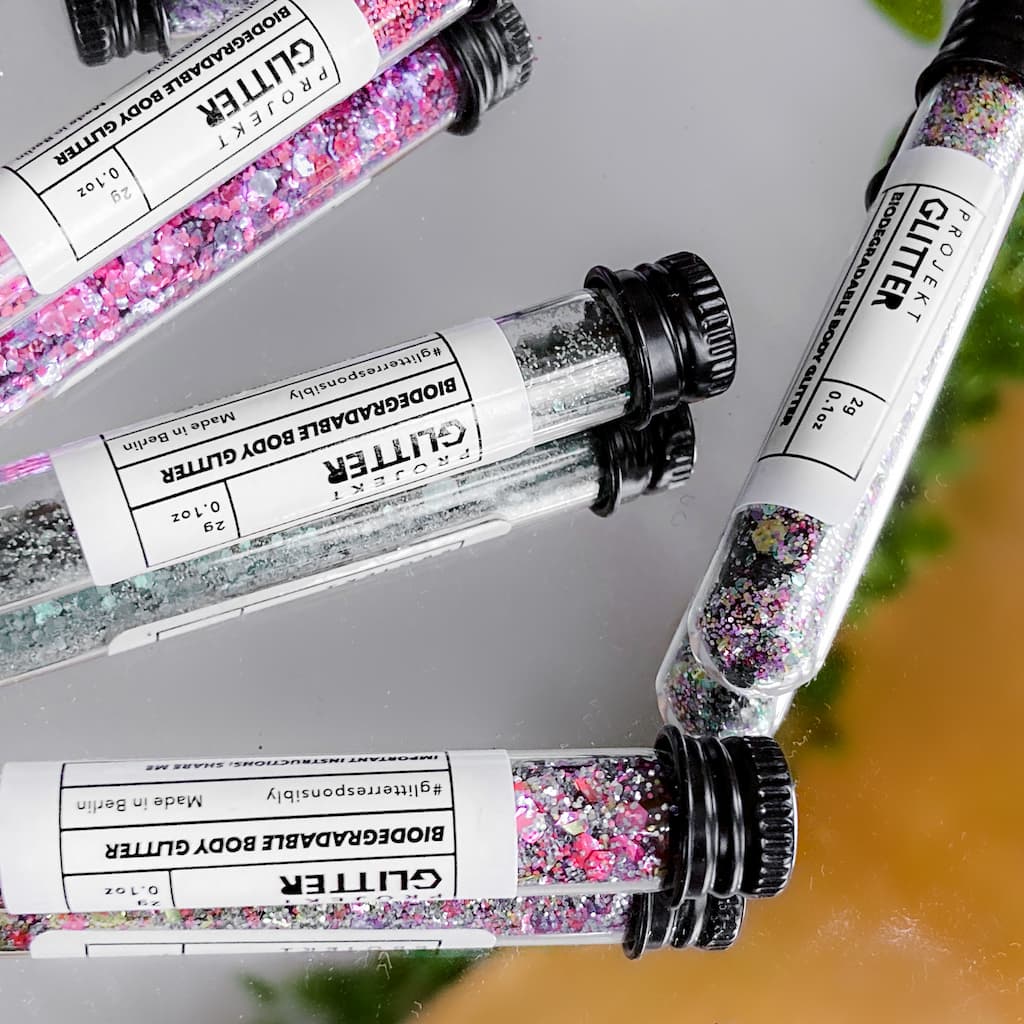It doesn’t live forever. And that’s the point.
Glitter has always felt a little bit magical.
The way it catches light. The way it lingers on your collarbone days after a party.
But for years, that magic came with a price — one you couldn’t see.
Plastic glitter doesn’t break down. It just… stays.
In oceans. In soil. In fish.
And in us.
So when we created Projekt Glitter, we knew we had to do things differently.
That meant finding glitter that looks beautiful — and disappears when it’s done.
So, how does biodegradable glitter actually break down?
The glitter we use is made from plant-based cellulose, usually from sustainably sourced eucalyptus trees.
That means:
-
It’s not plastic (at all).
-
It’s compostable — both in soil and freshwater.
-
It’s certified to break down in natural environments — not just industrial composting.
Once it leaves your cheekbones and hits the earth, here’s what happens:
-
Microbes get to work.
Bacteria and fungi in soil, compost, or water recognize the cellulose as food.
-
It starts to decompose.
Over time — and depending on conditions like heat and humidity — it breaks down into simple, harmless elements:
✨ CO₂
✨ Water
✨ Biomass
-
No microplastics. No mess.
What’s left behind? Nothing. Just a memory and maybe a really good photo.
How long does it take?
It depends.
In moist, microbe-rich conditions, a few weeks to a few months.
In drier places, it can take longer — but it will break down. And it won’t build up over centuries like plastic glitter does.
Why it matters
Because celebration doesn’t have to come at the planet’s expense.
Because what we put on our bodies shouldn’t end up inside other bodies (fish, birds, babies).
Because the most beautiful things are the ones that show up fully — and know when to let go.
Glitter can still be joyful. Loud. Messy. Soul-shifting.
It just doesn’t have to last forever.
And thank f*ck for that.
Ready to sparkle responsibly?


0 comments